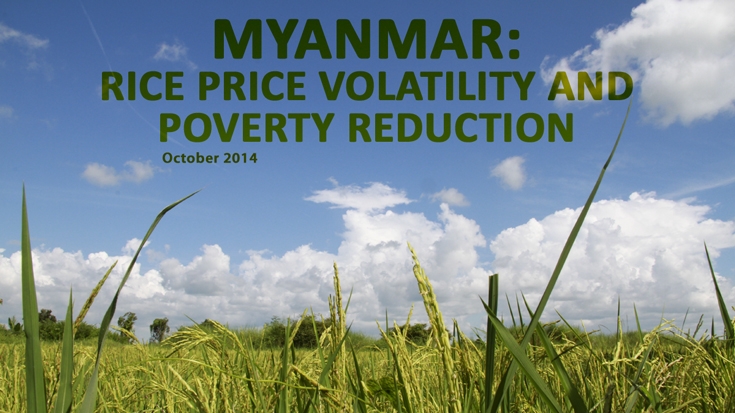YANGON, November 24, 2014 - A new study by the World Bank finds that rice price volatility in Myanmar is the highest among net rice exporting countries in Asia, preventing Myanmar’s rice farmers from earning high profits and keeping many families at or close to poverty income levels.
Rice prices have also risen by 40 percent between 2009-2013, increasing pressure on Myanmar’s overall food security and export competitiveness, according to the recent World Bank report “Myanmar: Rice Price Volatility and Poverty Reduction”.
“Agriculture is at the heart of poverty reduction in Myanmar. Changes in rice prices affect nearly 50% of the population whose livelihood depends on rice production,” said Abdoulaye Seck, the World Bank’s country manager in Myanmar. “A majority of rural population lives close to the poverty line and spends more than 60% of their incomes on food. Even temporary increase in rice prices reduces real income and households’ spending on health, education or more nutritious food. Rice price volatility, indeed, should concern everyone in Myanmar.”
Price volatility in Myanmar is mostly driven by heavy concentration of paddy production in just two months of a marketing year – November and December. Fragmented seed market, poor roads, weak phone coverage, unreliable market information, low export diversification, and high costs for rice mills to maintain rice stocks amplify these price fluctuations even further.
“Addressing price volatility requires a good assessment of the actual situation because rice production is seasonal and price volatility is inherent in agricultural markets," said Sergiy Zorya, a Word Bank senior agricultural economist, a lead author of the report. “Stable prices per se do not generate long-term agricultural growth if it is achieved through shortsighted policies. Short-term measures such as export restrictions, minimum farm prices or government-owned stocks might reduce some volatility but rarely produce positive outcomes for food security and poverty reduction in the long term“.

